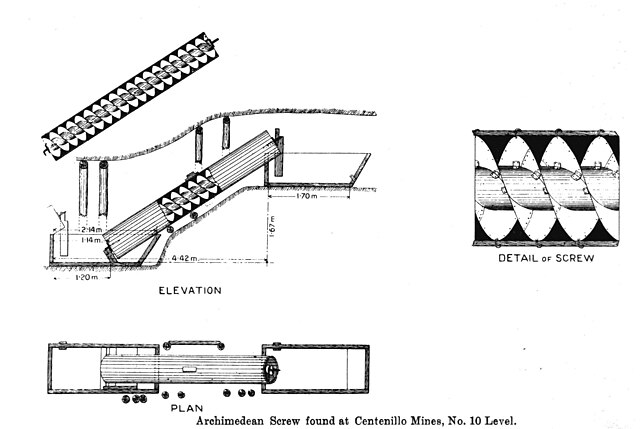Reverse overshot water wheel
Frequently used in mines and probably elsewhere, the reverse overshot water wheel was a Roman innovation to help remove water from the lowest levels of underground workings. It is described by Vitruvius in his work De architectura published circa 25 BC. The remains of such systems found in Roman mines by later mining operations show that they were used in sequences so as to lift water a considerable height.
Drainage wheel from Rio Tinto mines
Sequence of wheels found in Rio Tinto mines
Roman screw used to dewater mines in Spain
A water wheel is a machine for converting the energy of flowing or falling water into useful forms of power, often in a watermill. A water wheel consists of a wheel, with a number of blades or buckets arranged on the outside rim forming the driving car. Water wheels were still in commercial use well into the 20th century, but they are no longer in common use today. Uses included milling flour in gristmills, grinding wood into pulp for papermaking, hammering wrought iron, machining, ore crushing and pounding fibre for use in the manufacture of cloth.
The reversible water wheel powering a mine hoist in De re metallica (Georgius Agricola, 1566)
One of Finch Foundry's water wheels.
The Anderson Mill of Texas is undershot, backshot, and overshot using two sources of water. This allows the direction of the wheel to be reversed.
Two types of hydraulic-powered chain pumps from the Tiangong Kaiwu of 1637, written by the Ming Dynasty encyclopedist, Song Yingxing (1587–1666).







